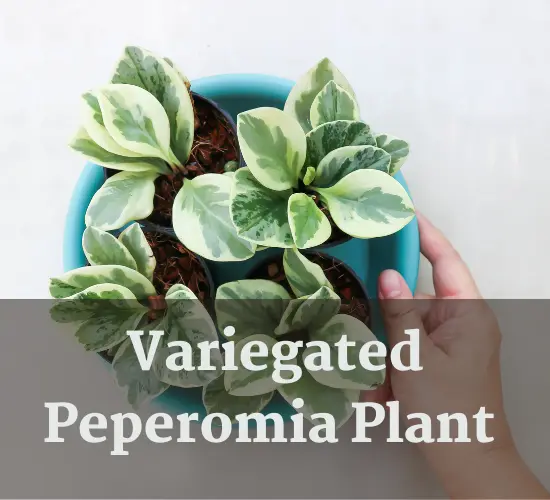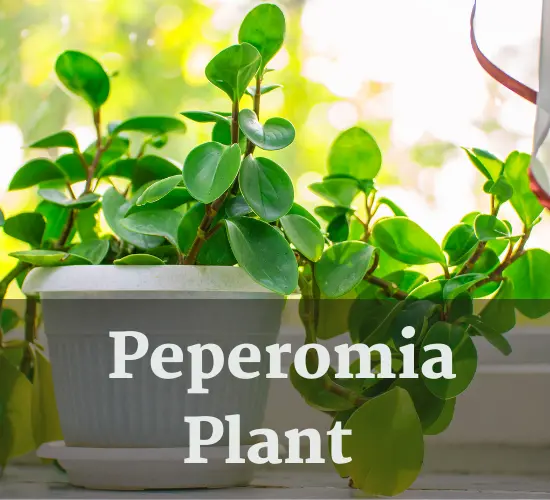Table of Contents
Peperomia Wilting
As a plant parent, you may have experienced the disappointment of seeing your beloved Peperomia plant with Wilting and limp leaves. It can be disheartening to see your plant struggling, but fear not, as this is a common issue that can be easily remedied with some simple care tips.
The Peperomia plant is a popular houseplant that is known for its attractive foliage and ease of care. However, when it comes to Peperomia leaf drooping, there are a few factors that may be contributing to this issue.
In this article, we’ll delve into the causes of Peperomia leaf Wilting and provide solutions to bring your plant back to its former glory. We’ll discuss the importance of consistent watering, increasing humidity levels, and allowing time for the plant to adjust after watering.
Additionally, we’ll provide other helpful tips for Peperomia care to ensure your plant thrives and continues to bring beauty to your living space. So, if you’re ready to revive your Peperomia and give it the care it deserves, read on for some expert advice.
Key Takeaways

- Consistent watering schedule and watering, when the top 2”-3” of soil is dry, can prevent leaf drooping caused by dry soil.
- Additional humidity-boosting methods can help increase moisture in the air and prevent leaf drooping.
- Overwatering can harm the plant and cause yellow leaves, so it is important to monitor soil moisture and avoid soaking the soil too often.
- Pruning can remove damaged or diseased leaves and prevent the spread of issues that may cause leaf drooping or yellowing.
Causes of Leaf Drooping
Two potential causes of Peperomia leaf drooping are a normal occurrence and incredibly dry soil. It’s important to understand that sometimes, leaf drooping is simply part of a Peperomia’s natural growth cycle. This is especially true for older leaves that have reached the end of their lifespan. In these cases, there is nothing to worry about and the plant will continue to thrive.
However, if leaf drooping is not a normal occurrence, incredibly dry soil could be the culprit. When soil is too dry, it can cause stress to the plant and lead to drooping leaves. This is because the Peperomia is not receiving enough water to properly hydrate its leaves.
Preventing drooping caused by dry soil is as simple as establishing a consistent watering schedule and making sure to water the plant when the top 2”-3” of soil is dry. In cases of extremely dry soil, soak watering may be necessary. Understanding plant stress and taking steps to prevent it can help your Peperomia thrive and avoid leaf drooping.
How to Fix Drooping
To address the issue of Peperomia leaf drooping, it is crucial to maintain a consistent watering schedule and ensure that the top 2”-3” of soil is dry before watering again. This is because sudden changes in soil moisture can cause stress to the plant and lead to leaf drooping.
It is also important to note that overwatering can be just as harmful as underwatering, so it’s important to find the right balance.

In addition to adjusting watering, it’s recommended to use additional humidity-boosting methods such as misting or a pebble tray. These methods can help increase the moisture in the air and prevent the soil from drying out too quickly.
When adjusting watering, it’s important to allow time for the plant to adjust after each watering. Soak watering can also be used for extremely dry soil, but it should only be done occasionally to avoid waterlogging the plant.
Additionally, using a well-draining soil mix can help prevent water from sitting in the soil for too long.
Overall, maintaining a consistent watering schedule and using humidity-boosting methods can help revive your Peperomia and prevent leaf drooping.
Other Peperomia Issues
Yellow leaves are another issue that can arise when caring for Peperomia plants. This can be caused by a variety of factors, including overwatering, underwatering, low light conditions, pest infestations, or disease. It is important to identify the root cause of the issue in order to properly address it.
To prevent yellow leaves, it is important to practice proper peperomia care techniques. This includes monitoring soil moisture levels and watering only when the top 2-3 inches of soil are dry, providing adequate lighting (but not direct sunlight), and regularly inspecting the plant for signs of pests or disease.
If a pest infestation is detected, appropriate pest management techniques should be employed, such as using neem oil or insecticidal soap. Additionally, pruning techniques can be used to remove any damaged or diseased leaves, which can help prevent the spread of the issue.
Frequently Asked Questions
Can overwatering cause Peperomia leaf drooping?
Yes, overwatering can cause peperomia leaf drooping. Common signs of overwatering include yellowing leaves, root rot, and wilting. Preventing overwatering involves allowing the soil to dry out before watering and ensuring proper drainage.
Is it normal for Peperomia to shed leaves during winter?
Peperomia shedding leaves during winter is normal, but excessive leaf discoloration may indicate poor winter care. Maintain consistent watering and humidity levels, and avoid exposing the plant to cold drafts or temperature fluctuations.
What is the ideal temperature for Peperomia plants?
The ideal temperature range for Peperomia plants is between 65-75°F, with a minimum of 50°F. During winter, it is important to reduce watering frequency and increase humidity levels to prevent stress and leaf drop.
How often should I fertilize my Peperomia?
Fertilizing Peperomia plants with the best fertilizers can enhance their growth and ensure healthy foliage. A feeding schedule of once every month during the growing period is recommended, using a balanced houseplant fertilizer diluted to half strength.
Can Peperomia be propagated through leaf cuttings?
Peperomia can be propagated through leaf cuttings by placing the cuttings in soil or water with rooting hormone. Allow the cuttings to root before replanting. This method can result in a new, healthy plant.
Conclusion
Peperomia plants are a popular choice for indoor gardeners due to their low-maintenance nature and unique appearance. However, if you notice your Peperomia’s leaves drooping and limp, it could be a sign of an underlying issue.
Common causes of Peperomia leaf drooping include overwatering, underwatering, low humidity, and shock from repotting. To fix drooping leaves, it’s important to first identify the cause and adjust your care accordingly.
Consistent watering, allowing the soil to dry out between waterings, and increasing humidity through misting or a humidifier can help revive your Peperomia. Additionally, giving your plant time to adjust after repotting or a change in environment can also be beneficial.
Overall, Peperomia plants are relatively easy to care for as long as you pay attention to their specific needs. By addressing issues such as leaf drooping and providing proper care, your Peperomia can thrive in your home for years to come. With some attention and care, your Peperomia can become a stunning addition to your indoor garden. So, keep an eye on your plant’s needs and enjoy the beauty it brings to your home.